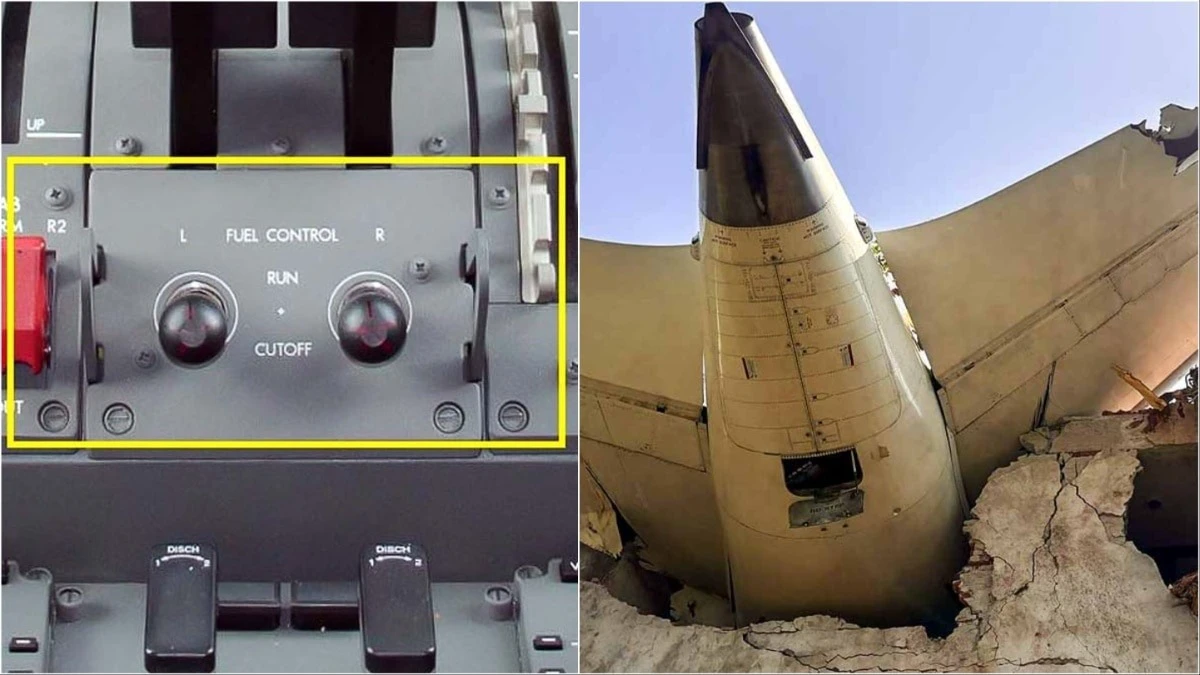Air India replaced a critical cockpit module housing the fuel control switches twice on the Boeing 787-8 Dreamliner that crashed last month, following a 2019 Boeing directive, PTI reported citing sources.
The matter came to the fore as US’s aviation regulator and Boeing maintain that the design of the fuel control switches is safe, even as investigators in India examined their possible role in the catastrophic crash that killed 260 people.
The Throttle Control Module (TCM) of the London-bound Dreamliner (registration VT-ANB) was replaced in 2019 and again in 2023, in line with Boeing’s Maintenance Planning Document (MPD) that requires the unit to be changed every 24,000 flight hours.
The TCM includes the fuel control switches, which investigators say unexpectedly from Ahmedabad on June 12. This disabled both engines, causing the plane to abruptly lose altitude and plough into a building.
The Aircraft Accident Investigation Bureau (AAIB), in its preliminary report released Saturday, noted the TCM replacements in 2019 and 2023 but clarified they were not linked to any known defect with the fuel switches.
FAA, BOEING SAY FUEL SWITCH LOCKS SAFE
Following the AAIB probe’s early findings, the US Federal Aviation Administration (FAA) issued a Continued Airworthiness Notification on July 11. According to the document accessed by Reuters, it stated that the fuel control switch design does not pose an unsafe condition and ruled out the need for a formal Airworthiness Directive.
Aircraft maker Boeing echoed the FAA’s stance in a Multi-Operator Message sent to global 787 operators, recommending no immediate action, sources told Reuters.
The preliminary probe report had referred to a of the fuel cutoff switches to ensure they could not be moved inadvertently. However, the advisory was not mandatory, and Air India said it did not carry out the inspection for that reason.
COCKPIT CONFUSION OVER FUEL CUTOFF
According to cockpit voice recordings recovered from the crash site, the aircraft’s fuel control switches were moved to “CUTOFF” one after the other, just a second apart, right after takeoff.
one pilot was heard asking.
“I did not do so,” the other responded.
The AAIB said both engines momentarily recovered before failing again, even after the switches were moved back to “RUN.” The plane failed to gain sufficient altitude and crashed within minutes.
Despite not performing the optional 2018 inspection, Air India complied with all applicable airworthiness directives and alert service bulletins, the probe report noted. Maintenance records confirmed the TCM, integral to engine throttle and fuel control, was replaced twice during the aircraft’s service life.
What led to the activation of the fuel cutoff switches remains under investigation. The full accident report is expected in the coming months.
